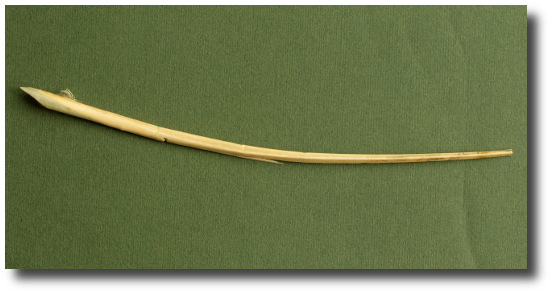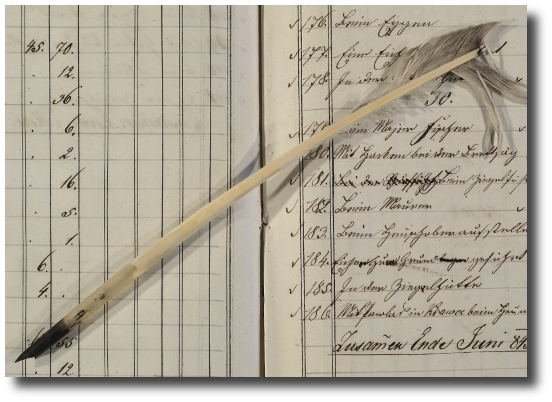The art of writing
II. Writing tools
Each material that was written on required the use of different writing tools. On papyrus, a reed pen was used, whereas a stylus was the tool used for wax tablets. Parchment and paper required the use of quills. Until the XIX century, bird feathers were used, most frequently goose, which were suitably cut. They did not have containers for ink, like fountain pens today, so they were accompanied by ink-wells, and the scribe had to additionally possess a knife for cutting the quill as it easily became blunt. In the middle ages, ink was produced from various substances, including gall, vitriol, gum and vinegar, and normally was dark brown or black. The shade of the ink and how much it faded with time depended on the substances used for its production and their proportions.
Have you ever closed a book or notepad with a pen inside? Former scribes also did the same. In our Archives, we have come across two such forgetful writers. The first lived in the XVI century, and left his pen inside the cards of the Krakow Town Records of 1592.

The second one forget to take his pen from the cards of a book he wrote in the XIX century.

In this way, thanks to the absent-mindedness of the writers, both goose quills, enclosed between cards of books, have remained until our times.